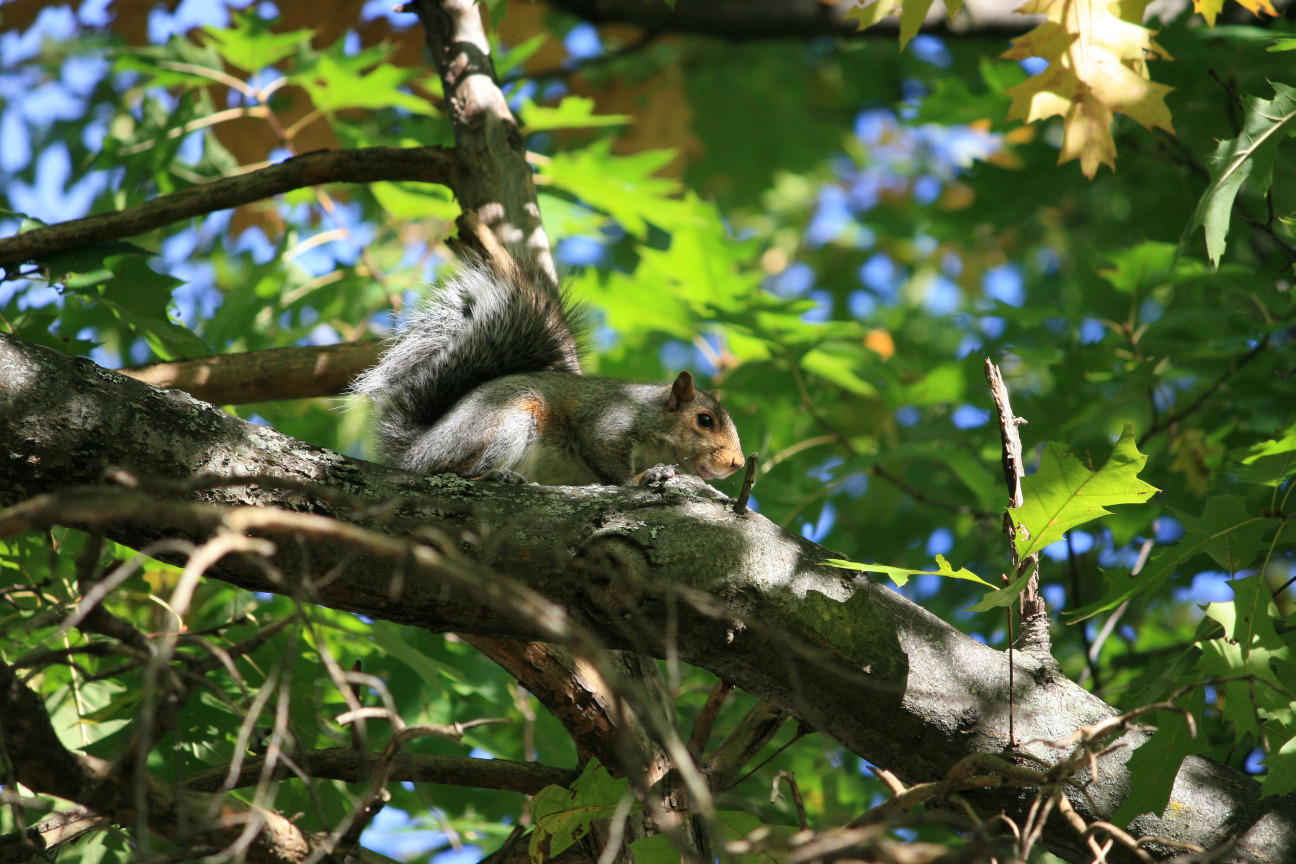A note about setting ISO in dark conditions: You can't just say "increase ISO when it's dark." It depends on what you're taking a photo of. As a rule of thumb, I only change ISO last - after I can't change aperture or exposure time, but ISO also needs to be high enough that you get enough data to keep the image looking clean (the histogram view should show a large amount of data on the right; if this looks a bit too bright, darken it later). A camera which shows the built-in exposure meter's reading (measuring how bright the scene is, and then displays this as a little icon on a scale) can help you decide how to change your exposure. Example: If you're trying to take a photo of backlit clouds at sunset, some cameras using certain metering settings will decide to try and make the leaves of surrounding trees look as green as in daytime, which will completely ruin the picture. On the other hand, if you are in a dark restaurant, you won't likely mind if a few small lightbulbs in the picture go totally white (even if they just look orange in person) when it's necessary to brighten the rest of the image to bring out details. Most likely, 90%+ of your time taking photos of things in darkness will mean that you'll be trying to brighten the scene in general, but be wary of brightly lit things, especially if they are the focus of your image.
The reason this is such a problem for cameras is that the push to more sensors with better ISO sensitivity has not been accompanied by similar improvement in the range from the darkest to lightest things that the sensor can pick up. Cameras can only pick up a relatively narrow range, and while it's at least as good as our eyes, our brains compensate for this and we remember dark and bright parts of scenes at the same time, experiencing it as a single view, and we expect cameras to do this as well. To try, some cameras have bracketing (multiple shots) or in-camera HDR modes, and they might be worth a shot.
More general thoughts about choosing a camera:
I think that most people can get by fine these days with compact cameras or even phone cameras. There are a few phone cameras that have sensors bigger than some compact or even mirrorless cameras - rare, but the size of the sensor is the main thing that determines image quality, including how well you can take images of darker scenes. If you want to take photos of dark things, generally you should get the biggest camera you can! (i.e., the biggest sensor and the lenses with the widest aperture.)
About the Sony a6000 - I don't have any comments on this camera in particular other than the price tag - compare it carefully to other brands, especially Nikon (cheap V1 and expensive J1 offerings) and Canon offerings (EOS M3). A lot of people swear by Olympus and Panasonic (Lumix) cameras in the mirrorless segment, too.
When in doubt, go to
http://www.dpreview.com and look at some camera reviews, paying attention to the final scores sheet and closing comments.
The tricky thing about mirrorless cameras is that they're basically just a smaller DSLR without a viewfinder prism and hump (unless it's an electric viewfinder, lol). They work best if you want to change lenses (and there are good lenses on offer), or you want the camera to be as large as possible without adding a viewfinder, mirror, or the DSLR level of bulk and weight. If you buy a mirrorless camera just to use one lens, that can be fine too, but a bridge or compact camera's lens will likely give a wider range without being much less quality.
Generally speaking: More camera = more image quality, but more bulk and expense. Note that a camera with a permanently bolted-on lens can be really convenient, and in many scenes it won't appreciably lose image quality over bigger cameras. At the same time, there are some phones and phone-sized devices coming out with physically large sensors that should rival the quality of mirrorless cameras. (Note that size = something like 3/8 inch, not 21 megapixels, which isn't a measure of the physical size.) The EOS M3 has an APS-C size sensor - which is the same size as most DSLRs use.
In short, a lot depends on what you think you want to actually do with a camera. There is no one-size-fits-all camera.


